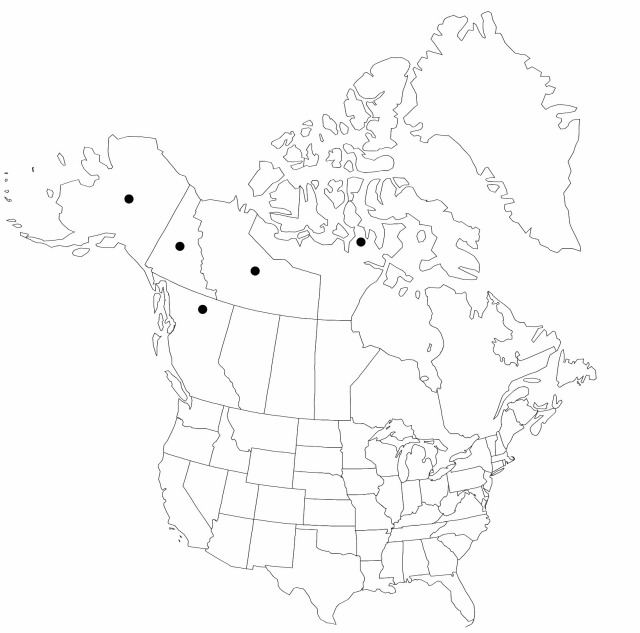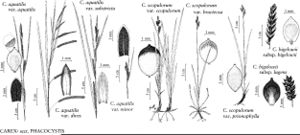Carex bigelowii subsp. lugens
Novosti Sist. Vyssh. Rast. 10: 104. 1973.
Plants usually cespitose. Proximal pistillate spike densely flowered, base cuneate, less often attenuate. Perigynia green, uniformly purple-black on apical 1/2, 1.5–2.9 × 0.9–2 mm; stipe 0–0.15 mm, apex rounded or acute, strongly to minutely papillose. 2n = 80 (Asia).
Phenology: Fruiting Aug–Sep.
Habitat: Dry to moist tundra
Elevation: 0–1500 m
Distribution

B.C., N.W.T., Nunavut, Yukon, Alaska, Asia (Siberia, Russian Far East).
Discussion
The chromosome number reported for Carex bigelowii subsp. lugens from eastern Asia indicates that there may be a significant genetic difference between populations of the two regions.
Most floras (I. L. Wiggins and J. H. Thomas 1962; E. Hultén 1968; A. E. Porsild and W. J. Cody 1980) recognize two species, C. lugens and C. consimilis, in the western Arctic, with greater affinities to the eastern Asian members of the complex than to the eastern C. bigelowii. These treatments usually separate C. lugens by the cespitose habit, leaves less than 2 mm wide, and setaceous proximal bract. Careful study of the complex indicates that although there are cespitose and rhizomatous morphs, leaf width, bract width, perigynium size and shape all vary considerably within and between populations and variation is not correlated with habit. It is not known whether variation in habit is due to genetic differences or merely to plant responses to differences in substrate and soil moisture. Long-rhizomatous plants tend to occur in dry tundra, and short-rhizomatous plants tend to occur in wet, peaty muskeg. For that reason, the group is recognized as a single taxon that clearly needs further study.
Carex bigelowii subsp. lugens may intergrade or hybridize with C. scopulorum at the southern edge of the range in the Yukon, as indicated by the wider leaves and large range of variation in the area. Carex sphacelata T. Holm and C. chionophila T. Holm, also described from the Yukon, appear to be hybrids between C. bigelowii subsp. lugens and C. aquatilis.
Selected References
None.
